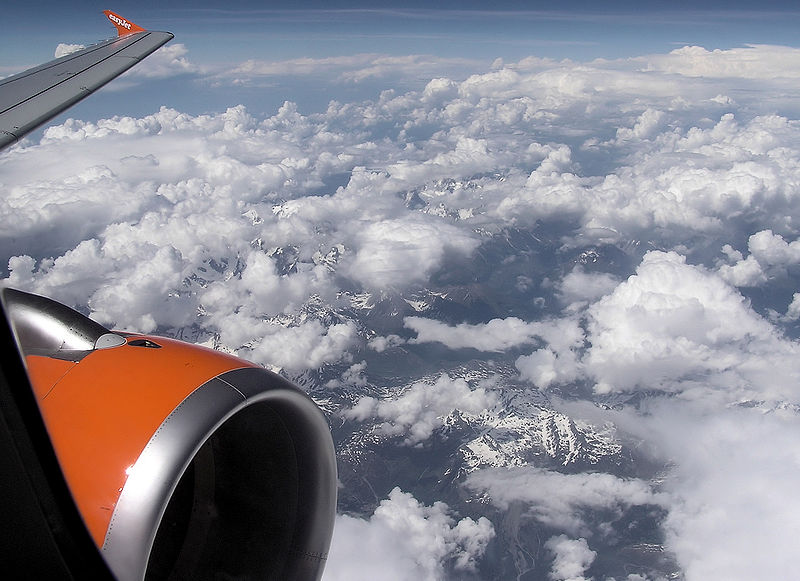“Ladies and gentlemen, we’ve just reached our cruising altitude of 35,000 feet. I’m going to shut off the seatbelt sign, and you’re free to walk around the cabin. But please keep your seatbelt fastened while in your seat, in the event of some unexpected turbulence.”
How many times have you heard that announcement or one similar to it? Ever wonder why that cruising altitude tends to be somewhere around 35,000 feet? I did. Here’s what I found out…
Why Planes Fly So High
If you think back to the science classes you took in high school, or if you’ve gone mountain climbing, or even if you’ve gone to Denver (“the mile-high city”), you may remember that the higher the altitude you are, the thinner the air is. The thinner the air is, the less resistance/drag there is on the plane, so less fuel is needed for the plane to hit the same speed (the weight of the plane also helps to conserve fuel, which is why airlines have figured out all sorts of crazy ways to decrease a plane’s weight), and therefore there’s more energy efficiency.
There’s a bad point, though – there are fewer oxygen molecules at higher altitudes, which means less combustion, which means less power is generated when you’re so high up. Going up to a higher altitude also means a higher climb, which means the plane burns up more fuel to get to its cruising altitude.
Many factors go into exactly what that cruising altitude will be – the flight’s direction, duration, and turbulence in the area. But the sweet spot allows for less drag and more fuel efficiency, but still enough oxygen to allow combustion, between roughly 30,000 and 40,000 feet.

The European Alps, as seen from an easyJet Airbus A319-100
A few more fun factoids
- Due to COVID, more planes were, at one point, flying closer to 40,000 feet than 35,000. Here’s why.
- Flying at 35,000+ feet helps you avoid stuff. Most rain and wind top off at about 36,000 feet. So if you’re flying just a bit higher than that, you avoid these weather issues. You also won’t find birds, bugs, drones, light aircraft or helicopters at that height
- The cardinal direction altitude rule stipulates that planes traveling in different directions will travel at different altitudes. Commercial planes traveling northeast, east, southeast and one degree short of south always fly at odd altitudes (33,000 feet, 37,000 feet, etc.). Those traveling in all other directions fly at even ones (32,000 feet, 38,000 feet, etc.). Planes traveling in the same direction fly 2,000 feet above or below other planes near them, to ensure they don’t collide or even get near each other.
- Pilots alone don’t determine altitude. They do it in conjunction with airline dispatchers. Airline dispatchers are airline employees who work at airline headquarters; they keep track of where the planes are, where they’re going and what each plane’s weight vs. fuel is. With that information, they calculate what a plane’s ideal altitude should be, and then request it from Air Traffic Control (ATC).
- The Concorde was built to fly at higher altitudes. It usually flew at 50,000 to 60,000 feet. The record for altitude is 123,520 feet – that was a Soviet MiG-25M military plane.
And now you know 😉
Want to comment on this post? Great! Read this first to help ensure it gets approved.
Want to sponsor a post, write something for Your Mileage May Vary or put ads on our site? Click here for more info.
Like this post? Please share it! We have plenty more just like it and would love it if you decided to hang around and sign up to get emailed notifications of when we post.
Whether you’ve read our articles before or this is the first time you’re stopping by, we’re really glad you’re here and hope you come back to visit again!

1 comment
Something else missing in your explanation. Actually airliners would go higher than FL400 if they could. The problem or limitation is the design of the airplane which restrict it to lower altitudes. That particular problem is coffin’s corner. As you go higher with lesser air density, the speed range between stall speed and critical mach number narrrow to a point that it becomes very difficult maintain stable flight.